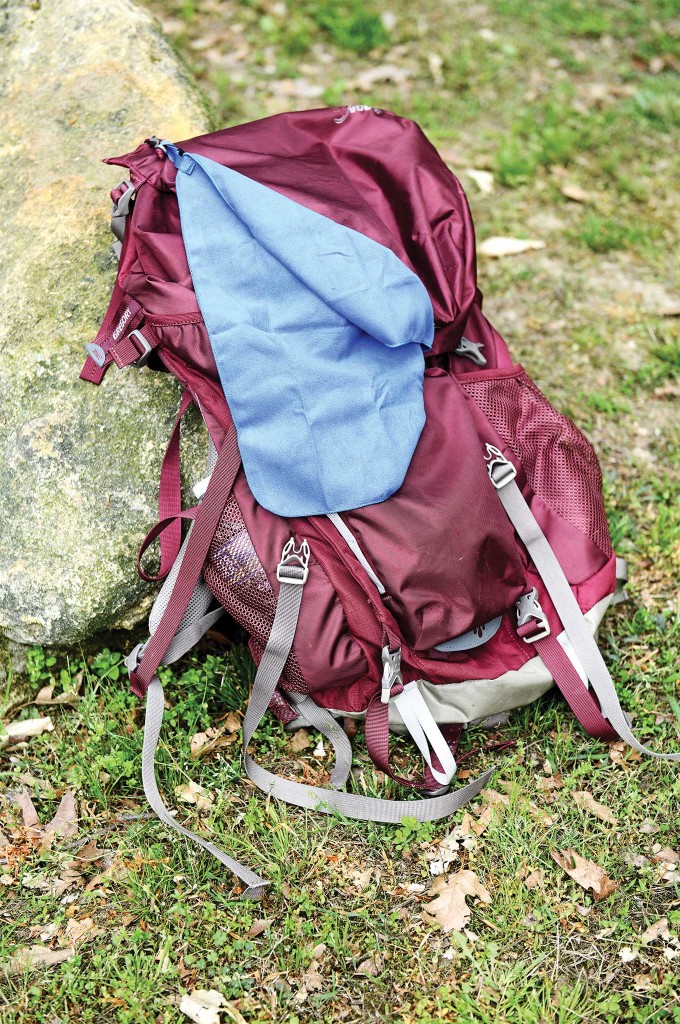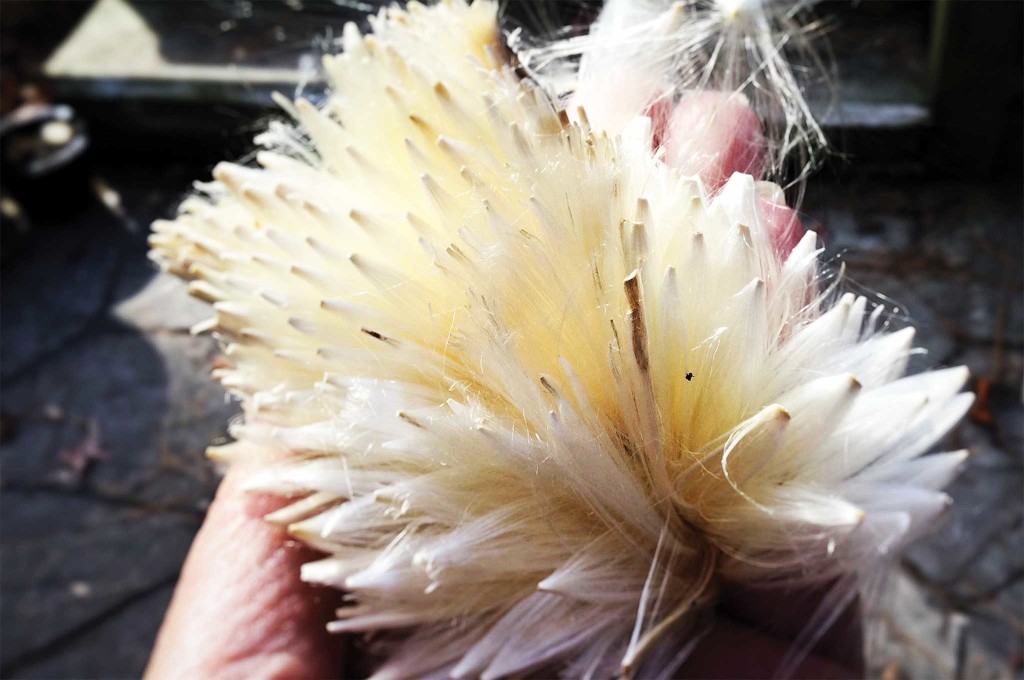RECOIL OFFGRID Preparation Survival Hygiene – Wilderness Wash-Up
In This Article
Warning!
The following story is for illustrative purposes only and is not intended as a medical advice. Seek training from a reputable instructor or consultation from a licensed medical professional.
There you are, surrounded on all sides. You can't see them, but you know they're there. Countless invaders are feasting on your body, multiplying at an exponential rate and crawling everywhere. Sound like a scene from a horror movie? Would you guess that it's actually taking place on your skin … right this second? Granted, most of these skin florae are either beneficial or harmless. Yet, when skin is damaged or conditions alter in favor of overgrowth, some of these little guys can wreak havoc on your system.
Maintaining your hygiene is an important — almost automatic — habit in the civilized world. In the wilderness? It's up to you. But proper hygiene in the backcountry isn't just a luxury; it's necessary for the prevention of bacterial and fungal infections.

Sadly, it's also used as a terrible excuse for why women should remain indoors. You may have heard this condescending talk before, “Women aren't cut out for austere environments. They have too many issues — especially down there.”
After you finish rolling your eyes, let's get real for a second. There's a lot of misinformation out there regarding wilderness hygiene in general, let alone female-specific issues. Whether you're a female survivalist looking to add to your skillset or a male prepper who needs to be educated for his family members or survival group, you should know best practices for hygiene when SHTF.
Therefore, let's discuss some common myths associated with being in the wilderness and look at a few techniques and tips that enable everyone — men and women — to thrive in all environments.
Fact: Being dirty in the woods is a choice. Some people use being in the wilderness as an excuse to embrace their stink. These folks may not last long before contracting an infection. Wash your hands to prevent fecal matter from getting on food or in your mouth. Wash your armpits, skin folds, in between your toes, and your genitals to prevent fungal infections and the spread of bacteria. The following is what you need to stay clean.
When Water is Plentiful: Pack biodegradable soap in your kit. You can find this in outfitter or recreation stores in liquid or bar form. Some reliable brands include Campsuds, Sea to Summit Wilderness Wash, All Terrain Wonder Wash, and Dr. Bronner's Castile Liquid Soap.
When Water is a Commodity: If you're in a bug-out situation or have gotten lost in the backwoods without a reliable source of water, consider the following items:
When You Need to Improvise: Sometimes having a store-bought cleaner just isn't possible. Or maybe you've used it up in a long-term survival situation. That's when you'll need to rely on previous training:
Fact: Brushing your teeth prevents cavities, mouth sores, and paint-peeling bad breath. Bacteria from an abscessed tooth could spread to the sinuses, blood, and brain. A tube of toothpaste doesn't require much room in your get-out-of-dodge bag; it's a small price to pay for your health. If that's not enough to convince you to brush your teeth, think of the alternative in a SHTF scenario — tooth extraction in the wilderness with no anesthesia and a rusty pair of pliers.
When the World Still Turns: Be sure to pack the following items in each of your emergency kits, whether it's your get-home pack or your vehicle kit:
When You Need a Backup: Whether you've run out of the above items, lost them, or had to barter them in a post-apocalyptic scenario, you're not at a total loss when it comes to dental care. Consider the following alternatives:
When You Need to Improvise: In a truly dire situation, you might have consumed all of your primary and backup dental care products. Time to adapt:
Fact: Hair care is your personal choice. Sure, there may be times, after a weeklong trek through backcountry, when you take full advantage of those rinse-and-repeat directions on your shampoo and conditioner bottles. Or maybe, with some planning and extra gear to lug around, you decide to wash your hair as often as you want. It's your choice.
But do you really need to wash your hair? Yes, Oily McFerguson, you need to wash your hair. The “no ‘poo” craze in this country is great for that city girl who never sweats or gets dirty. However, out in the wilderness, excess oil combined with dead skin cell accumulation leads to clogged hair follicles, inflammation, and even an overgrowth of yeast. So wash your hair; your scalp will thank you.
When Water Is Plentiful: With the right gear, showering in the great outdoors shouldn't be a chore.
When Water is a Commodity: If you need to conserve water, consider these products:
When You Need to Improvise: Sometimes life hands you lemons. Here's how to make lemonade when it comes to hair care:
Fact: Not peeing in the woods causes urinary tract infections. While this is a concern mostly for women and uncommon among men, it can happen to guys who are 50 and older. Holding in your urine creates a breeding ground of bacteria in the bladder. Subsequently, people who hold in their pee also don't want to drink more water. Instead of flushing the system and staying hydrated, they create the perfect storm for infections. Below are some considerations.
When Water is Plentiful: For most gents in the backcountry, it's just a matter of finding a tree, standing with feet shoulder-width apart, and draining the lizard (not that you needed a detailed explanation). But for ladies, it's not so simple. Thankfully, women can now pee standing up, too! Female urination devices are funnel-like items that are held flush against your body for quick evacuation. There are a few devices on the market to choose from, including a hardened funnel with removable tube, or a softer, flexible silicone device. They are hygienic, small, and easy to use. After use, rinse water through the funnel. Wash with soap and water daily. Try these brands: Freshette or Go Girl.
When Water is a Commodity: If you don't have enough water to wash up consistently, consider a pee rag. Having a bandana or small rag clipped to your pack is a convenient way to hygienically wipe yourself without the trouble of carrying a roll of toilet paper around. Sounds gross, but urine is sterile except in the case of bacterial UTIs. Keeping the rag on your pack allows it to dry out before its next use, while ultraviolet rays from the sun disinfectant it.
When You Need to Improvise: If you're a woman and have no pee device and no rag, well, just pee normally. Unless you have a bacterial UTI, urine is sterile. Yes, it may be annoying to search for that perfect fallen tree or huge rock for privacy, but the key is to empty your bladder whenever necessary.

For female survivalists, packing a urination device or pee rag can help keep things hygienic when indoor plumbing...
Fact: A period is an inconvenience, but so is lack of electricity. For women in the wilderness, it shouldn't hold them back. Follow the same principles as being on your period in civilization: change your product when required and keep things clean. And, guys, your loved one's menstruation might spark some cringing at home or plenty of Shark Week euphemisms in the locker room, but don't overlook this section. The more knowledgeable you are of the issues facing your better half, the more apt you are to win her over to the prepper cause when it's time to stock up on survival supplies or practice your emergency plans.
When the World Still Turns: Obviously, packing the following feminine hygiene products prior to a disaster is key:
When You Need a Backup: If you run out of the above items, consider these alternatives:
When You Need to Improvise: Create your own pad. Many women used cloth before the invention of disposable pads; they're reusable and better for the environment. Outer pads can be made from old blankets or flannel shirts. Inner pads can be made by stitching together multiple layers of cloth, cotton, or any absorbent material, including weed fluff or peat moss.

In post-disaster scenarios, weed fluff and peat moss can be used as absorbent material in improvised menstrual pads.
When the sky starts to fall, hygiene shouldn't be an option; it's imperative to your success. Like food, water, and shelter, hygiene concerns are an essential element of your preparation. Bacterial and fungal infections are difficult to treat in the wilderness. Luckily, with proper hygiene, they're easy to prevent. Therefore, the next time you get your pack together, make sure you save room for your favorite soap … lest you want your backwoods adventure to turn into your very own microscopic horror movie.
Eryn Chase is a U.S. Marine Corps combat veteran trained in identifying sources of instability in foreign countries. Proficient at navigating the complex civil-military terrain of foreign policy, she has advised and advocated for military and civilian leaders from multiple partner nations. Chase is currently the co-owner of TEAM TORN, a weapons and survival school based out of Nevada that trains both civilians and members of the U.S. military and government. She specializes in survivalism, combatives, and firearms training for women.
www.teamtorn.com
Don’t miss essential survival insights—sign up for Recoil Offgrid's free newsletter today!
Read articles from the next issue of Recoil Offgrid: Issue 22
Read articles from the previous issue of Recoil Offgrid: Issue 20
Check out our other publications on the web: Recoil | Gun Digest | Blade | RecoilTV | RECOILtv (YouTube)
Editor's Note: This article has been modified from its original version for the web.
 STAY SAFE: Download a Free copy of the OFFGRID Outbreak Issue
STAY SAFE: Download a Free copy of the OFFGRID Outbreak Issue
No Comments